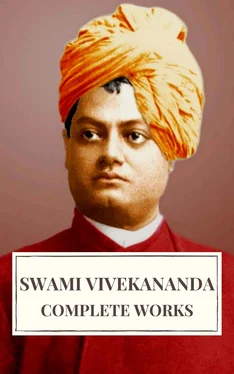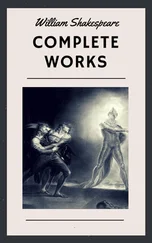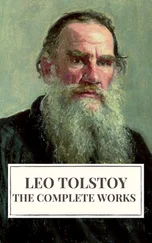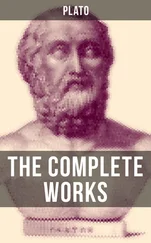The idea is that we have to get our knowledge of ordinary objects by direct perception, and by inference therefrom, and from testimony of people who are competent. By “people who are competent,” the Yogis always mean the Rishis, or the Seers of the thoughts recorded in the scriptures — the Vedas. According to them, the only proof of the scriptures is that they were the testimony of competent persons, yet they say the scriptures cannot take us to realisation. We can read all the Vedas, and yet will not realise anything, but when we practise their teachings, then we attain to that state which realises what the scriptures say, which penetrates where neither reason nor perception nor inference can go, and where the testimony of others cannot avail. This is what is meant by the aphorism.
Realisation is real religion, all the rest is only preparation — hearing lectures, or reading books, or reasoning is merely preparing the ground; it is not religion. Intellectual assent and intellectual dissent are not religion. The central idea of the Yogis is that just as we come in direct contact with objects of the senses, so religion even can be directly perceived in a far more intense sense. The truths of religion, as God and Soul, cannot be perceived by the external senses. I cannot see God with my eyes, nor can I touch Him with my hands, and we also know that neither can we reason beyond the senses. Reason leaves us at a point quite indecisive; we may reason all our lives, as the world has been doing for thousands of years, and the result is that we find we are incompetent to prove or disprove the facts of religion. What we perceive directly we take as the basis, and upon that basis we reason. So it is obvious that reasoning has to run within these bounds of perception. It can never go beyond. The whole scope of realisation, therefore, is beyond sense-perception. The Yogis say that man can go beyond his direct sense-perception, and beyond his reason also. Man has in him the faculty, the power, of transcending his intellect even, a power which is in every being, every creature. By the practice of Yoga that power is aroused, and then man transcends the ordinary limits of reason, and directly perceives things which are beyond all reason.

50. The resulting impression from this Samadhi obstructs all other impressions.
We have seen in the foregoing aphorism that the only way of attaining to that superconsciousness is by concentration, and we have also seen that what hinder the mind from concentration are the past Samskaras, impressions. All of you have observed that, when you are trying to concentrate your mind, your thoughts wander. When you are trying to think of God, that is the very time these Samskaras appear. At other times they are not so active; but when you want them not, they are sure to be there, trying their best to crowd in your mind. Why should that be so? Why should they be much more potent at the time of concentration? It is because you are repressing them, and they react with all their force. At other times they do not react. How countless these old past impressions must be, all lodged somewhere in the Chitta, ready, waiting like tigers, to jump up! These have to be suppressed that the one idea which we want may arise, to the exclusion of the others. Instead they are all struggling to come up at the same time. These are the various powers of the Samskaras in hindering concentration of the mind. So this Samadhi which has just been given is the best to be practised, on account of its power of suppressing the Samskaras. The Samskara which will be raised by this sort of concentration will be so powerful that it will hinder the action of the others, and hold them in check.

51. By the restraint of even this (impression, which obstructs all other impressions), all being restrained, comes the “seedless” Samadhi.
You remember that our goal is to perceive the Soul itself. We cannot perceive the Soul, because it has got mingled up with nature, with the mind, with the body. The ignorant man thinks his body is the Soul. The learned man thinks his mind is the Soul. But both of them are mistaken. What makes the Soul get mingled up with all this? Different waves in the Chitta rise and cover the Soul; we only see a little reflection of the Soul through these waves; so, if the wave is one of anger, we see the Soul as angry; “I am angry,” one says. If it is one of love, we see ourselves reflected in that wave, and say we are loving. If that wave is one of weakness, and the Soul is reflected in it, we think we are weak. These various ideas come from these impressions, these Samskaras covering the Soul. The real nature of the Soul is not perceived as long as there is one single wave in the lake of the Chitta; this real nature will never be perceived until all the waves have subsided. So, first, Patanjali teaches us the meaning of these waves; secondly, the best way to repress them; and thirdly, how to make one wave so strong as to suppress all other waves, fire eating fire as it were. When only one remains, it will be easy to suppress that also, and when that is gone, this Samadhi or concentration is called seedless. It leaves nothing, and the Soul is manifested just as It is, in Its own glory. Then alone we know that the Soul is not a compound; It is the only eternal simple in the universe, and as such, It cannot be born, It cannot die; It is immortal, indestructible, the ever-living essence of intelligence.
Chapter II. Concentration: Its Practice

1. Mortification, study, and surrendering fruits of work to God are called Kriyâ-yoga.
Those Samâdhis with which we ended our last chapter are very difficult to attain; so we must take them up slowly. The first step, the preliminary step, is called Kriya-yoga. Literally this means work, working towards Yoga. The organs are the horses, the mind is the rein, the intellect is the charioteer, the soul is the rider, and the body is the chariot. The master of the household, the King, the Self of man, is sitting in this chariot. If the horses are very strong and do not obey the rein, if the charioteer, the intellect, does not know how to control the horses, then the chariot will come to grief. But if the organs, the horses, are well controlled, and if the rein, the mind, is well held in the hands of the charioteer, the intellect, the chariot reaches the goal. What is meant, therefore, by this mortification? Holding the rein firmly while guiding the body and the organs; not letting them do anything they like, but keeping them both under proper control. Study . What is meant by study in this case? No study of novels or story books, but study of those works which teach the liberation of the Soul. Then again this study does not mean controversial studies at all. The Yogi is supposed to have finished his period of controversy. He has had enough of that, and has become satisfied. He only studies to intensify his convictions. Vâda and Siddhânta — these are the two sorts of scriptural knowledge — Vada (the argumentative) and Siddhanta (the decisive). When a man is entirely ignorant he takes up the first of these, the argumentative fighting, and reasoning pro and con; and when he has finished that he takes up the Siddhanta, the decisive, arriving at a conclusion. Simply arriving at this conclusion will not do. It must be intensified. Books are infinite in number, and time is short; therefore the secret of knowledge is to take what is essential. Take that and try to live up to it. There is an old Indian legend that if you place a cup of milk and water before a Râja-Hamsa (swan), he will take all the milk and leave the water. In that way we should take what is of value in knowledge, and leave the dross. Intellectual gymnastics are necessary at first. We must not go blindly into anything. The Yogi has passed the argumentative state, and has come to a conclusion, which is, like the rocks, immovable. The only thing he now seeks to do is to intensify that conclusion. Do not argue, he says; if one forces arguments upon you, be silent. Do not answer any argument, but go away calmly, because arguments only disturb the mind. The only thing necessary is to train the intellect, what is the use of disturbing it for nothing? The intellect is but a weak instrument, and can give us only knowledge limited by the senses. The Yogi wants to go beyond the senses, therefore intellect is of no use to him. He is certain of this and, therefore, is silent, and does not argue. Every argument throws his mind out of balance, creates a disturbance in the Chitta, and a disturbance is a drawback. Argumentations and searchings of the reason are only by the way. There are much higher things beyond them. The whole of life is not for schoolboy fights and debating societies. “Surrendering the fruits of work to God” is to take to ourselves neither credit nor blame, but to give up both to the Lord and be at peace.
Читать дальше















